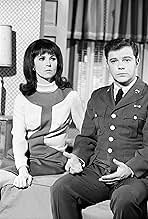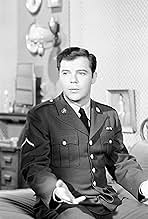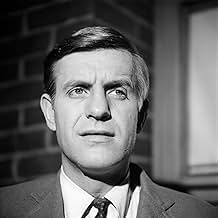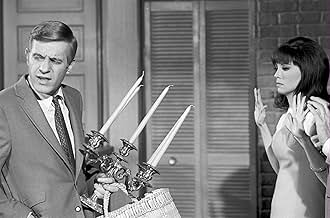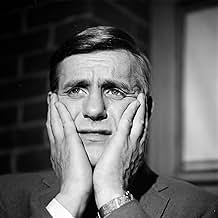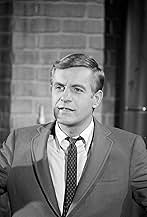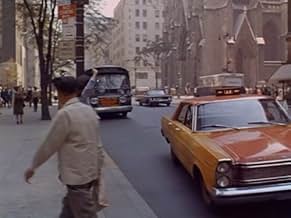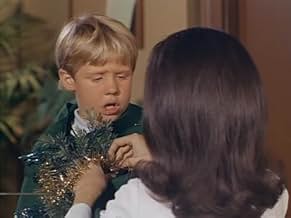अपनी भाषा में प्लॉट जोड़ेंAn aspiring actress moves from her hometown of Brewster, New York, to try to make it big in New York City, having to take several offbeat "temp" jobs to support herself in between her variou... सभी पढ़ेंAn aspiring actress moves from her hometown of Brewster, New York, to try to make it big in New York City, having to take several offbeat "temp" jobs to support herself in between her various auditions and bit parts.An aspiring actress moves from her hometown of Brewster, New York, to try to make it big in New York City, having to take several offbeat "temp" jobs to support herself in between her various auditions and bit parts.
- 7 प्राइमटाइम एमी के लिए नामांकित
- 3 जीत और कुल 11 नामांकन
एपिसोड ब्राउज़ करें
कहानी
क्या आपको पता है
- ट्रिवियाThe running gag of having the pre-credit sequence ending with a character referring to Ann as "that girl" was originally only supposed to be used in the pilot as it was believed that they would never be able to keep finding ways to work it into the conversation. It ended up being used in almost all the episodes.
- गूफ़Ann Marie moves to New York City from Brewster, NY, which is on the Metro North Railroad's Harlem Line to Grand Central Terminal. The footage behind the credits was shot on New Jersey Transit's Northeast Corridor Line (photographed from the rear of a train leaving New York and then shown backwards so the train appears to be going to New York, although on the wrong track).
- क्रेज़ी क्रेडिटThe opening for season 1 only is not the famous train tracks, but a breathless and beautiful Ann Marie running across a NY street to a building, dressed in a pale blue coat, white gloves and shoes, white pocketbook under her arm. The train tracks don't come until seasons 2, 3, & 4, and season 5 adds lyrics to the up-tempo opening music ("Diamonds, daisies, snowflakes...").
- कनेक्शनFeatured in 7 Nights to Remember (1966)
- साउंडट्रैकMinnie the Moocher
Lyrics by Irving Mills and Clarence Gaskill
Music by Cab Calloway
Performed by Lew Parker
फीचर्ड रिव्यू
... or if not that, Ted Bessell as one of the most sexually frustrated men of 1960's New York City. If the Mary Tyler Moore show had first aired in 1966 instead of 1970, it would have been this show. American culture changed that quickly. Marlo Thomas plays a young woman, Ann Marie, from the village of Brewster, New York who comes to the big city to become an actress, which is a tough career to break into, thus she takes a series of quirky jobs to get by which often become the central theme of certain episodes. In the very first episode she meets Donald (Ted Bessell), a writer for a magazine, and they are a couple for the next five years, a couple that - apparently - never has sex.
Back home, Ann's dad (Lew Parker) never quite trusts Donald's intentions with his daughter, and believes that girls should live at home until married. Thus a mainstay of the show is dad bursting in on Ann and Donald, either incidentally or intentionally, only to find them in what appears to be a compromising position (Ah ha! I've got him!) that in the end has a logical and platonic explanation.
If you didn't live through this period in history, you might think of the 1960's and believe it was nothing but an endless parade of hippies, pot smoking, and student/police confrontations over the Vietnam War. The fact is, most people in 1960's America were still living in the 1950's at the time, and women were still largely accepted only in traditional professions - teaching, nursing, secretarial work, acting - you know, jobs that involve either serving men or children. So That Girl was about as far as network TV could go with this topic - a young woman living in her own apartment pursuing a career in ANYTHING in New York City - without raising middle class eyebrows.
It was bright, funny, and innocent, sometimes to the point of being naive, but I'll always look back fondly on "That Girl" of my youth.
Back home, Ann's dad (Lew Parker) never quite trusts Donald's intentions with his daughter, and believes that girls should live at home until married. Thus a mainstay of the show is dad bursting in on Ann and Donald, either incidentally or intentionally, only to find them in what appears to be a compromising position (Ah ha! I've got him!) that in the end has a logical and platonic explanation.
If you didn't live through this period in history, you might think of the 1960's and believe it was nothing but an endless parade of hippies, pot smoking, and student/police confrontations over the Vietnam War. The fact is, most people in 1960's America were still living in the 1950's at the time, and women were still largely accepted only in traditional professions - teaching, nursing, secretarial work, acting - you know, jobs that involve either serving men or children. So That Girl was about as far as network TV could go with this topic - a young woman living in her own apartment pursuing a career in ANYTHING in New York City - without raising middle class eyebrows.
It was bright, funny, and innocent, sometimes to the point of being naive, but I'll always look back fondly on "That Girl" of my youth.
टॉप पसंद
रेटिंग देने के लिए साइन-इन करें और वैयक्तिकृत सुझावों के लिए वॉचलिस्ट करें
विवरण
- रिलीज़ की तारीख़
- कंट्री ऑफ़ ओरिजिन
- भाषा
- इस रूप में भी जाना जाता है
- Miss Independence
- फ़िल्माने की जगहें
- Downtown Manhattan Heliport, मैनहटन, न्यूयॉर्क शहर, न्यूयॉर्क, संयुक्त राज्य अमेरिका(Closing theme; Seasons 2 thru 5)
- उत्पादन कंपनी
- IMDbPro पर और कंपनी क्रेडिट देखें
इस पेज में योगदान दें
किसी बदलाव का सुझाव दें या अनुपलब्ध कॉन्टेंट जोड़ें







